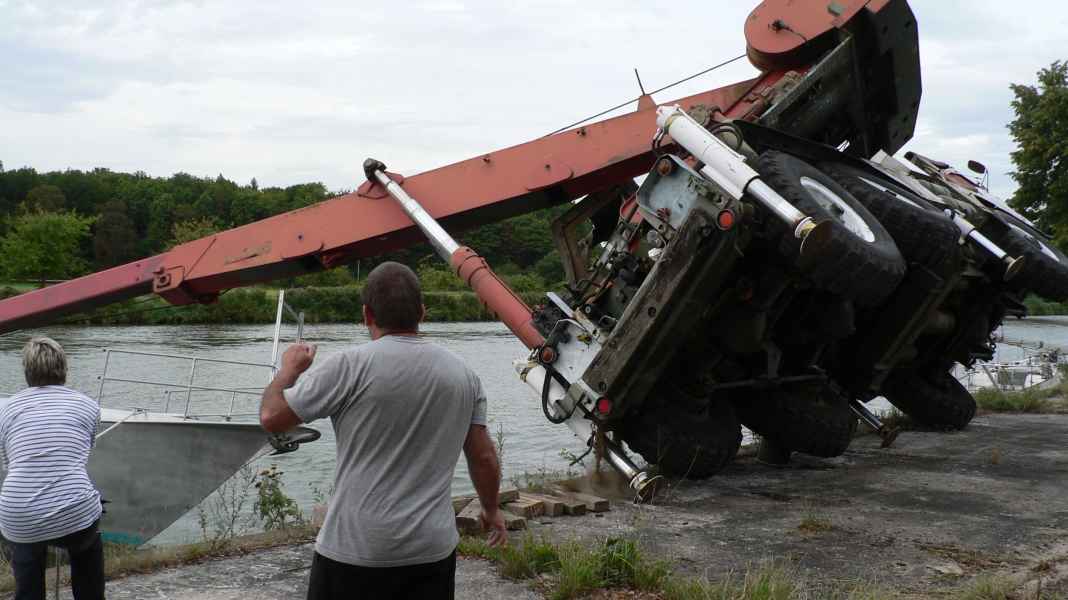
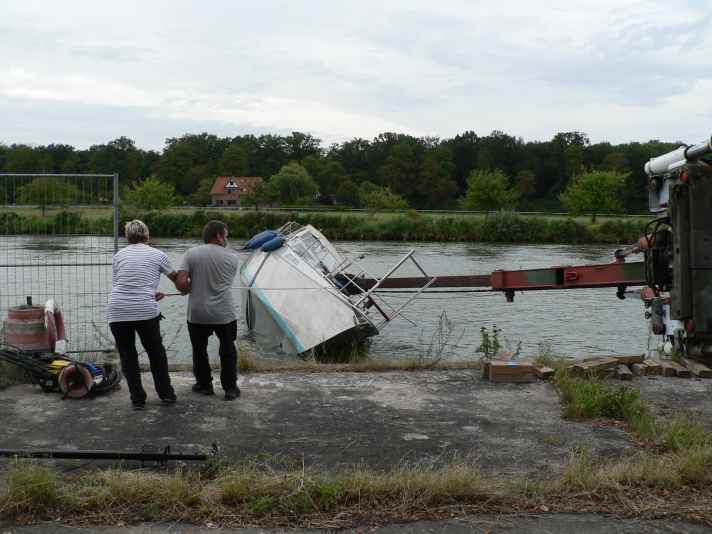
The owner couple were returning from a trip to Sweden at the end of August when they experienced the ultimate nightmare. The yacht was to be uncrated in the port of Rusbend near Bückeburg - and suddenly the 32-tonne heavy-duty crane tipped onto the superstructure of the aluminium yacht and pushed it under water before sinking into the Mittelland Canal. The driver was able to save himself at the last moment by jumping out of his cockpit. He remained uninjured.
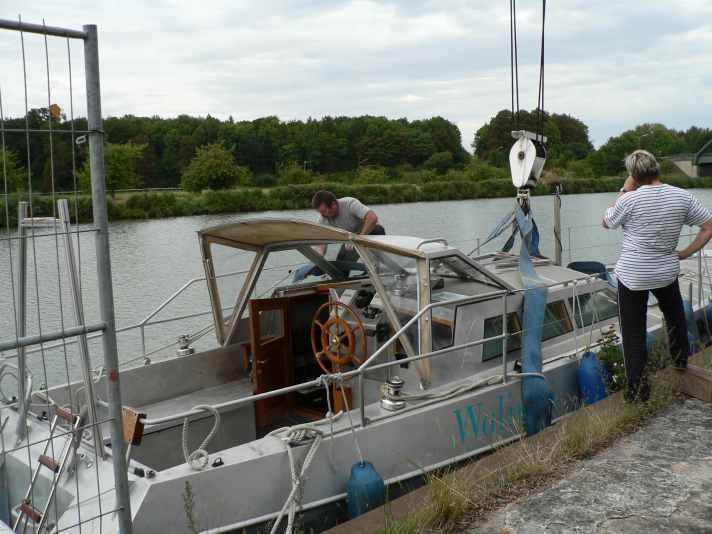
Various fire brigades worked well into the night on the extremely tricky recovery of the crane (the badly damaged yacht floated back up and was taken to a shipyard). The canal was closed to shipping during the work.
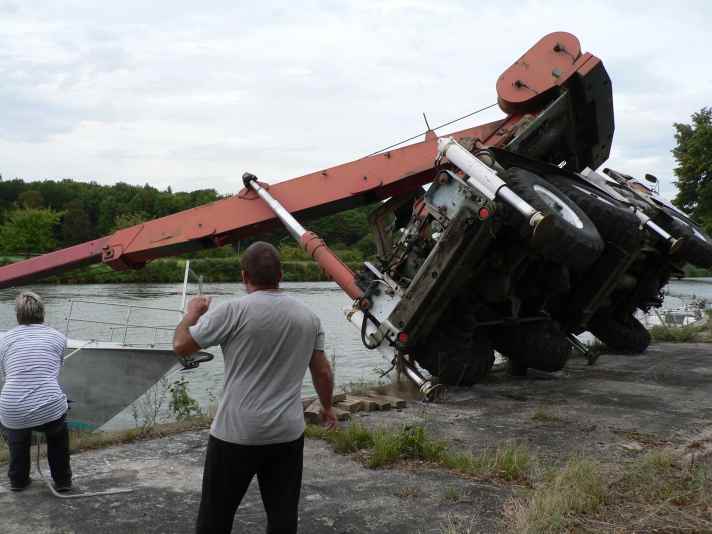
From the report of the Bückeburg fire brigade:
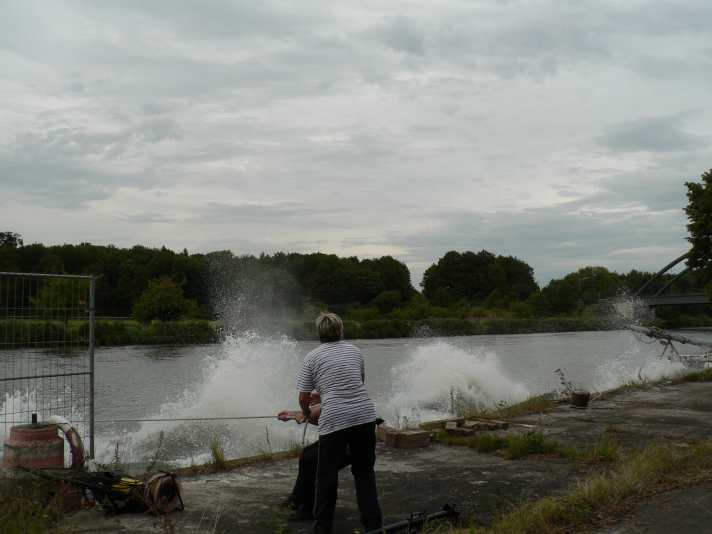
"According to current information, the course of the accident is as follows: A 32-tonne crane attempted to lift a boat out of the canal. In the process, the crane tipped over and fell onto the boat to be lifted with the boom in front. The crane operator initially fell into the water with the crane, but was fortunately able to pull himself to safety after the boat owners called out to him. The crane operator then managed to retrieve an oil tank from the water before the fire brigade arrived. The crane was still connected to the boat by the lifting straps and slowly sank completely into the canal.
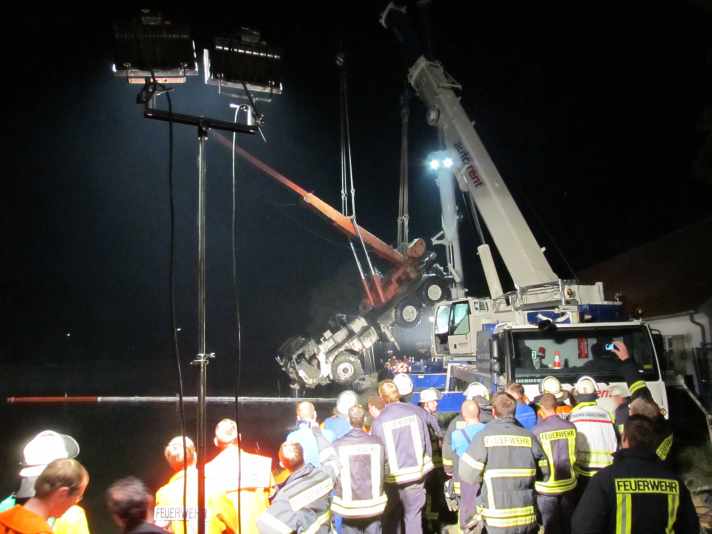
As there were fortunately no injuries, the fire brigade's work focussed on securing the affected properties and protecting the environment from leaking fuels. The emergency services from the town centre, Evesen, MWA and Rusbend managed to set up an oil barrier and contain the small quantities of leaking fuels over an area of 500 square metres. A rubber dinghy and fire boat were used for this purpose. This protected the environment from damage.
At the same time, the relevant authorities of the district, the waterway police and the shipping authority were informed of the situation. They arrived with two more boats and closed the Mittelland Canal to shipping traffic. In addition, further oil booms from the district were brought to the scene for safety reasons. The boat to be lifted was able to leave the danger zone under its own power after the lifting straps were removed.
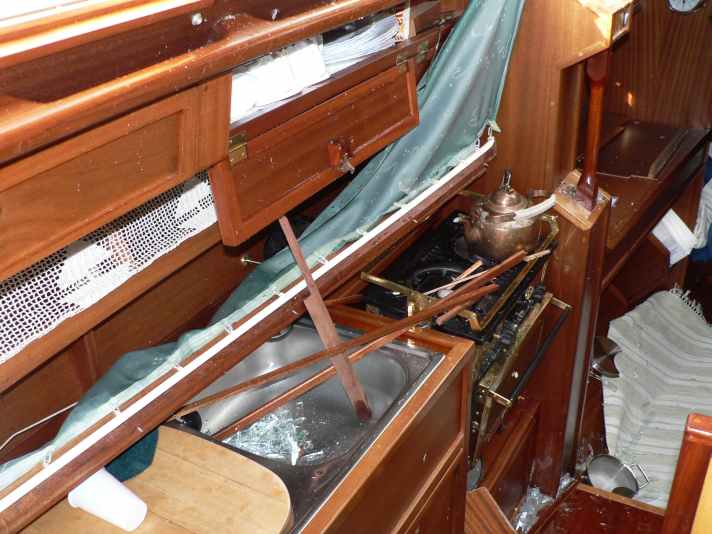
Once the situation had been stabilised, the recovery of the vehicle was planned in consultation with all the organisations and owners involved. For this purpose, two commercial 130-tonne cranes with escort vehicles and the Petershagen Frille diving team were alerted. Before the recovery of the crane could begin, a sonar system from the Waterways Navigation Office had to be used to determine the position of the crane under water. It turned out that the crane was lying sideways and parallel to the water's edge in the canal. The boom was raised so that it was pointing towards the centre of the canal.
The next step was to rig the recovery cranes and position them in the confined area. The diving team then coordinated with the salvage company on how to create attachment points on the crane involved in the accident so that it could be lifted out of its difficult position and set down in the harbour.
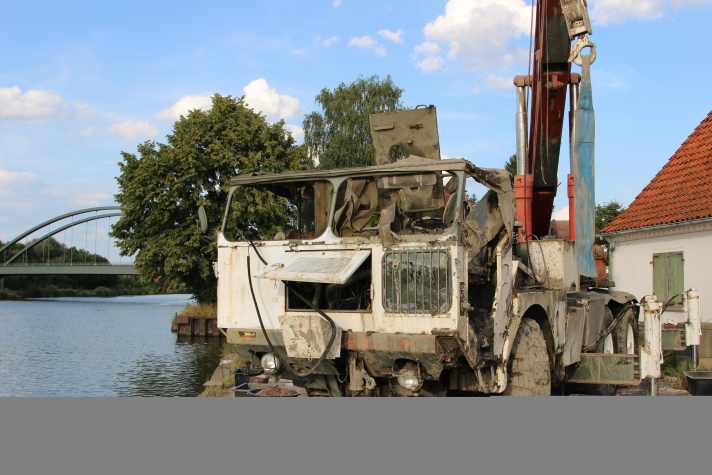
The securing measures turned out to be very difficult. In the meantime, the scene had to be illuminated due to the darkness. However, the divers struggled against zero visibility under water, physical strain and had to be changed regularly after long dives. In addition, a safety diver had to be on standby in boats on the water and land side at all times.
The next difficulty was that it was only possible to move the heavy lifting chains under the accident crane, which was stuck in the silt, very slowly and using technical equipment. Here, too, constant attention had to be paid to the safety of the divers, as the behaviour of the accident crane under water was unpredictable. After intensive work, a first anchor point was successfully created.
The accident crane was then lifted by the first crane. Bit by bit and in many stages, both cranes were able to lift the crane. As there were no ideal anchor points, the chains and fastening slings had to be moved regularly. This required a great deal of manual labour and experience on the part of the recovery company. At around 01:30, the crane was finally back on its own three axles on land. This revealed considerable damage and the enormous amount of mud that had accumulated on the entire vehicle.
The incident site was gradually dismantled by around 3 a.m., also with the important units operating in the background. This included, among other things, supplying the emergency services during the 9-hour operation and the coordination of the operation site by the command vehicle. Around 100 emergency personnel from the authorities and organisations from Bückeburg and the surrounding area were involved in the entire operation. The police have started an investigation into the course of the accident. The operation caused such a stir that many citizens followed the incident from the other side of the Mittelland Canal and various press media were on site."
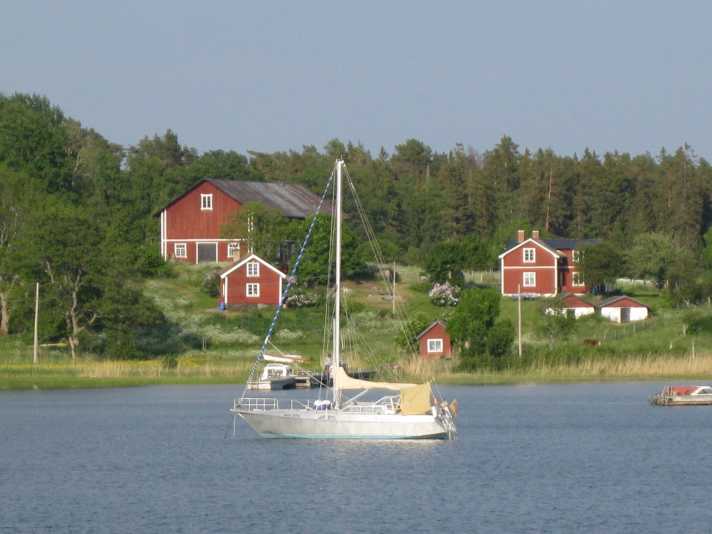
You can read all the details about the sensational case and the owner couple's experiences exclusively in the new issue of YACHT.

